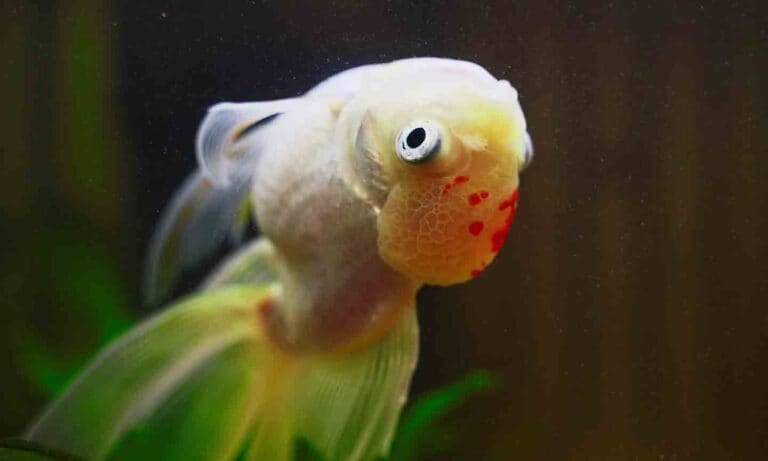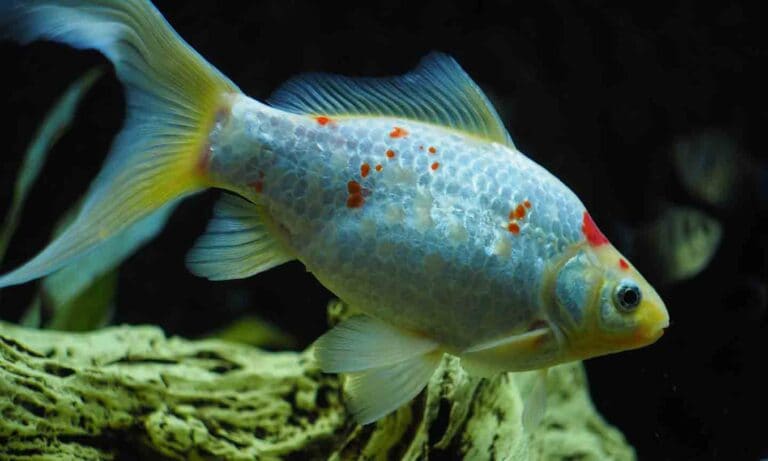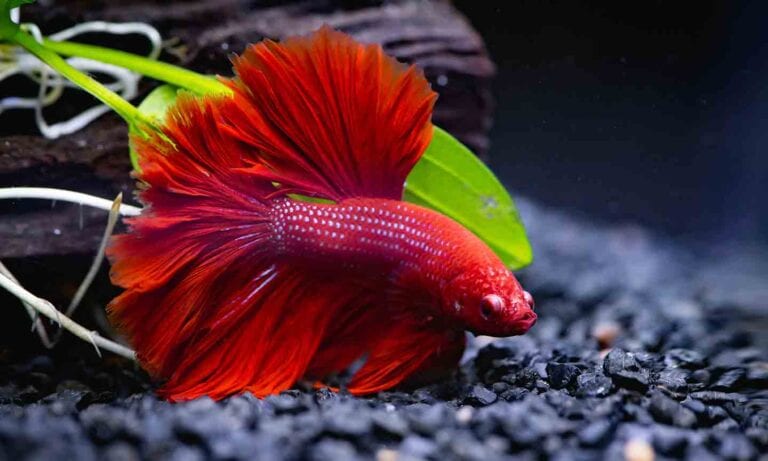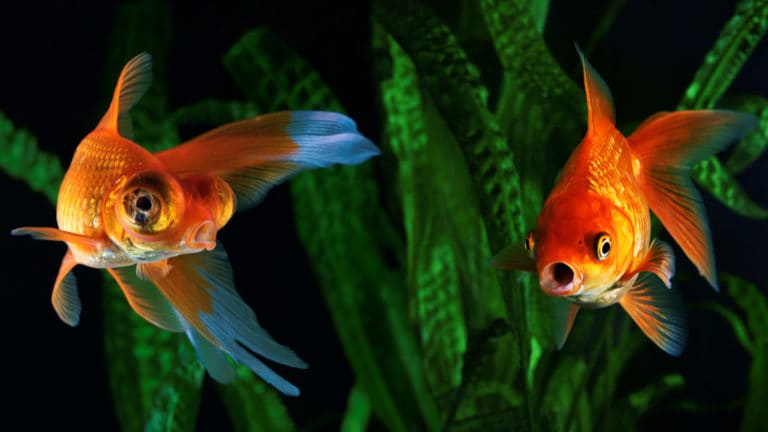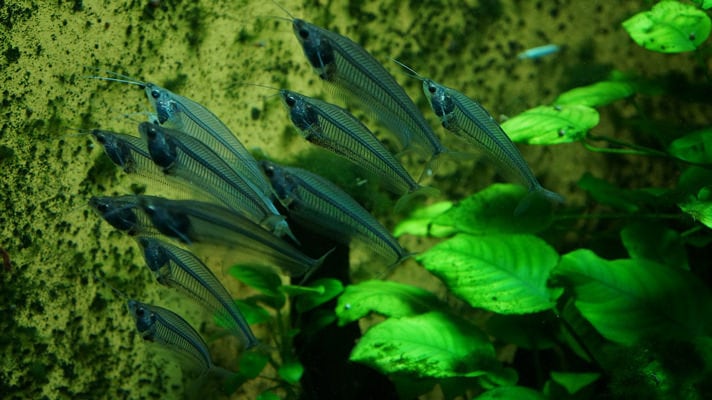Q.
What is the disease called “dropsy”? It has hit my goldfish aquarium twice over the last year. I have tried to research this disease, but the sources I have read said that dropsy is caused by improper diet, temperature fluctuation, bad water conditions and overcrowding, as well as no known cause. There does not seem to be a reliable treatment or cure for dropsy. I have become very discouraged with my fishkeeping. I know I am doing something wrong, but I cannot seem to correct the problem.
A.
I doubt that there are many fishkeepers who have not shared your discouragement at one time or another. The problem of dropsy in goldfish and koi is one that can drive you to despair.
Let’s first talk about the problem itself. Dropsy is not a disease, it is a sign of a disease. Its characteristic appearance is a general bloating of the fish’s body.
Frequently, the fish’s scales stand out from the body, giving it a pinecone-like appearance. Hence, the Japanese name for the problem — “matsukasa disease” is “pinecone” disease. Sometimes dropsy can be accompanied by another sign of disease commonly referred to as “pop-eye,” in which one or both eyes can bulge outward.
Both of these signs are symptomatic of the same basic problem: a dangerous buildup of internal pressure. A tumor or swollen organ may be the cause. Or fluids may be building up in the internal cavity, the result of bacterial or viral infections. A massive infestation of internal parasites can produce dropsy. An intestinal blockage can produce signs of dropsy. Bloating, scale protrusion and pop-eye can also befall female fish that are ripe with eggs.
Because dropsy results in a significant change in the fish’s volume and density, it is often accompanied by buoyancy and swimming problems. Either the animal sinks to the bottom or it floats at the surface.
Frankly, it is nearly impossible for the hobbyist to determine with any precision the underlying cause of a dropsy. This is why use of drugs to “cure” the problem meets with limited and unpredictable success. As often as not, the fish will live or die irrespective of drug treatment.
Most often a fish with dropsy dies. Perhaps not immediately, but within several months. Indeed, in instances where dropsy is caused by internal infections, the bloating will disappear for a time, only to return a bit later with a vengeance. Thus, many reports of dropsy “cures” are just misinterpretations of the temporary regression of the disease.
If you have recurrent problems with dropsy in different fish, you can rule out tumors, egg binding and other idiosyncratic causes. The most likely cause in such instances is either internal infection or intestinal blockage. The former frequently accompanies the latter.
In ornamental goldfish and koi, in particular, internal bacterial infections are the most common cause of dropsy. The bacteria that have been isolated are ubiquitous to the backyard pond environment. That is, they are present in and around the pond (and in the fish) all the time. So the question is: Why and how do these bacteria suddenly go out of control and produce this deadly malady?
The answer is simple: fish stress. Many factors, including those you mentioned, such as improper diet, temperature fluctuation, bad water conditions and overcrowding, impair the fish’s immune abilities for keeping normally harmless bacteria and other pathogens in check. A reproductive explosion of the disease organisms follows quickly, and the disease takes hold. Sometimes, if you intervene early, you can help the fish to reimpose immune control over the disease. But all too often, the disease has taken its toll by the time dropsy is noticed.
The best way to deal with dropsy is to prevent it. This means, first and foremost, that the aquarium or backyard pond should be lightly stocked. The generally used rule of 1 inch of goldfish per 30 square inches (2.5 centimeters per 194 square centimeters) of aquarium surface is simply inadequate even under the best of circumstances. This is equivalent to keeping a 1-inch goldfish in a coffee can! Consider no more than one average-sized adult goldfish per 30 gallons of well-filtered and aerated water. With koi, I recommend no more than one 12-inch fish per 150 gallons (30 centimeters per 590 liters), or 10 square feet (0.9 square meter) of pond surface.
Second, maintain good water quality consistently and make sure that the nitrogen cycle has been completed in new aquariums and backyard ponds. The pH should be kept between 6.8 and 7.8, with a preference for 7.0 to 7.4. Dissolved oxygen should always exceed 6 parts per million. Ammonia and nitrite should be zero with hobbyist test kits. Daily temperature fluctuations should be kept to within several degrees.
It is also very important that you test for chlorine. Low levels of chlorine can produce continuous stress, leading to dropsy after a few weeks or months. If chlorine is present, you must use a chlorine neutralizer. If the culprit is chloramine — a combination of chlorine and ammonia — an ammonia neutralizer must be used to treat all water.
Next, a good diet that combines vitamin-enriched commercial pellet fish foods, vegetables and assorted pond critters (worms, mosquito larvae, etc.) is essential. A strong immune system requires good feeding practices and good nutrition.
Which leads to me to the problem of intestinal blockage. Some pellet fish foods can cause repeated blockage problems if they are not soaked in water prior to feeding. When fed dry, they tend to expand inside the gut and block passages. If the blockage remains for a day or more, swelling can lead to fluid leakage into the body cavity. Pathogenic bacterial growth follows. In this regard, I have found that large, heavy pellets produce more problems than light, small pellets.
A sudden drop in water temperature after heavy feeding can also lead to intestinal blockage. The rate of fish food passage through the intestinal tract varies directly with the water temperature. If a sudden drop in temperature occurs, everything inside the fish grinds to a halt. If water temperatures do not rise soon, the blockage will remain and internal infection, followed by dropsy, appear soon after. This is why early-spring and late-fall feedings in outdoor ponds are risky.
Posted by: Chewy Editorial
Featured Image: darkocv/Shutterstock
Share:

